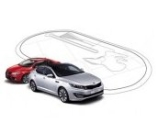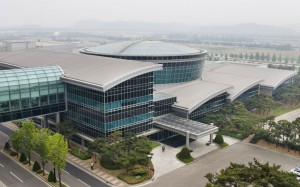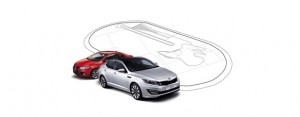
DAILY - UPDATED
KIA NEWS
&
SPY SHOTS
REVIEWS
SALES REPORTS

Kia Factories Go Green, Carbon Capture And Storage Plant To Launch In 2015
Kia has a number of green initiatives lined up for the remainder of 2013, all of which go well beyond the efficiency of their cars.
The automaker is looking to become even more environmentally friendly by not just lowering fuel consumption and tailpipe emissions on their vehicles, but by also implementing measure to reduce consumption and waste across the entire life cycle of each Kia car.
These measures extend to suppliers, all of whom are being encouraged to adopt green methods.
Kia is doing their part by cleaning up their production plants, as well as becoming more efficient in transportation and all aspects of the supply and manufacturing chain.
They are also looking at improving their recycling methods of their cars that have reached the end of their usefulness.
“Green Experts” Network To Make Kia Factories Cleaner
 Customers will be able to make greener choices since Kia plans on disclosing more environmental information about their products than ever before.
Customers will be able to make greener choices since Kia plans on disclosing more environmental information about their products than ever before.
Last year, Kia created a 68 person network of green experts whose task it was to find ways to make Kia factories cleaner.
The discoveries made will be put into effect this year, with the Gwangju, Sohari and Hwaseong the first to make the changes.
Parts manufacturing is the second largest contributor to a cars CO2 usage, with the numbers coming in at between 10-15% for a medium sized saloon.
Kia plans to sign an agreement with the Korean government that will allow them to create an improved energy management system throughout the whole supply chain.
The distribution network is also likely to be streamlined. The goal is to reduce the number of shipments to domestic plants, from warehouses to the production line and of finished cars to the dealerships.
Everyone will also see their costs reduced when that is put in place.
Kia’s second and third tier suppliers will be given access to more logistical data and will continue using ports and transportation companies that are located close to factories, thus reducing their mileage costs.
Kia is also trying to determine a customer supply forecast in order to streamline their parts supply operations.
Pilot Carbon Capture And Storage (CCS) Plant
 The Namyang Research and Development Center in Korea established a pilot carbon Capture and Storage (CCS) plant in 2012, and Kia is planning to commercialize CCS in 2015.
The Namyang Research and Development Center in Korea established a pilot carbon Capture and Storage (CCS) plant in 2012, and Kia is planning to commercialize CCS in 2015.
Last year Kia’s total CO2 output fell by the equivalent of the intake 28 million mature pine trees. There has been a 123kg reduction in the company’s CO2 output per car since 2008.
The past decade has seen Kia reduce waste by 23%. Less than 1% of their waste makes it to the landfill, and Kia plans on reducing incinerated waste from 8.4% to 3% by 2016.
As much as 90% of all waste in the Korean factories is recycled.
The last 10 years has also seen water consumption in Kia’s factories reduced by 25.8%, which is a much needed change because of the water shortage issues in the country.
Kia’s own standards in managing water and atmospheric pollutants are far stricter than those that are on the law books.
From the very moment the design phase begins, Kia performs a Life Cycle Assessment that includes digital blueprints on the reliability of their vehicles. The goal is to make 95% of their vehicles recyclable by 2015.